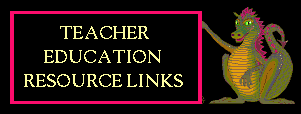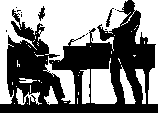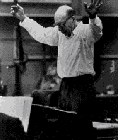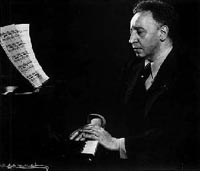The Musical Intelligence
Introduction: What is intelligence? (Gardner,
Howard. Frames of Mind, 1983)
 The theory of multiple intelligences developed by
Howard Gardner has significantly influenced education in the last few
decades. Gardner refers to the intelligences as ways of knowing and
understanding yourself and the world around you. In the introductory
section of Frames of Mind, his first popular book on the subject, Gardner
defines intelligence as "the ability to solve problems, or to create
products, that are valued within one or more cultural settings"
(1983). He explains that he was seeking to undermine the common notion of
intelligences as a general capacity or potential which every human being
possessed to a greater or lesser extent. He questioned the assumption that
you could measure intelligence with standardized verbal instruments, such as the
short answer, paper and pencil IQ test. He asks his readers to
"perform two thought experiments."
The theory of multiple intelligences developed by
Howard Gardner has significantly influenced education in the last few
decades. Gardner refers to the intelligences as ways of knowing and
understanding yourself and the world around you. In the introductory
section of Frames of Mind, his first popular book on the subject, Gardner
defines intelligence as "the ability to solve problems, or to create
products, that are valued within one or more cultural settings"
(1983). He explains that he was seeking to undermine the common notion of
intelligences as a general capacity or potential which every human being
possessed to a greater or lesser extent. He questioned the assumption that
you could measure intelligence with standardized verbal instruments, such as the
short answer, paper and pencil IQ test. He asks his readers to
"perform two thought experiments."
- Imagine you have never heard of the concept of
intelligence as a single property of the human mind; or that an instrument
called the intelligence test exists.
- "Cast your mind widely about the world
and think of all the roles or "end states" - vocational and
avocational - that have been prized by cultures during various eras
(hunters, fishermen, farmers, shamans, religious leaders, psychiatrists,
military leaders, civil leaders, athletes, artists, musician, poets,
parents, and scientists)"
In Gardner's early research he discussed seven
intelligences. Gardner later introduced an eighth
intelligence: the naturalist intelligence.
Howard Gardner - http://www.pz.harvard.edu/PIs/HG.htm
 Verbal - Linguistic
Verbal - Linguistic
 Logical - Mathematical
Logical - Mathematical
 Visual - Spatial
Visual - Spatial
 Body - Kinesthetic
Body - Kinesthetic
|
 Intrapersonal
Intrapersonal
 Interpersonal
Interpersonal
 Musical - Rhythmic Musical - Rhythmic
 Naturalist
Naturalist
|
Gardner believes that everyone
possesses some capacity in all intelligences, but these intelligences function
together in ways unique to each person. He proposes that most people can
develop each intelligence to an adequate level of competency. Gardner
determined the validity of each intelligence by reviewing such factors as the
potential impairment of the intelligence by brain damage, the existence of
savants and prodigies, a definable set of expert "end-state"
performances, an evolutional history and plausibility, support from
psychological data, an identifiable set of operations, and the use of a symbol
system.
For an update from Howard Gardner himself -
Multiple Intelligences after Twenty Years - http://www.pz.harvard.edu/PIs/HG_MI_after_20_years.pdf
Check out the Project Zero website - http://www.pz.harvard.edu/Default.htm
|

Howard Gardner
"As
a young person I was a serious pianist and enthusiastically involved
with other arts as well. When I began to study developmental and
cognitive psychology, I was struck by the virtual absence of any mention
of the arts. An early professional goal was to find a place for the arts
within academic psychology. I am still trying! In 1967 my continuing
interest in the arts prompted me to become a founding member of Project
Zero, a basic research group at the Harvard Graduate School of Education
begun by a noted philosopher of art, Nelson Goodman. For 28 years, I was
the co-director of Project Zero and I am happy to say that the
organization continues to thrive"
(AERA,
2003) |
 Research on Multiple Intelligences
Research on Multiple Intelligences
Several major researchers in the area of multiple
intelligences have websites with published materials and articles. These
authors have published in popular magazines as well as peer-reviewed journals.
General Research Findings
- Intelligence is not fixed at birth. It
changes and grows through life. It can be improved and expanded.
- Intelligence can be taught and improved by
activating levels of perception.
- Intelligence is a multiple phenomenon that
occurs in many different parts of the brain/mind/body system.
- A stronger, more dominant intelligence can be
used to train (improve or strengthen) a weaker intelligence.
Eight
Intelligence Domains -
Howard Gardner
|
 Verbal
Linguistic Verbal
Linguistic
|
|
INTELLIGENCE
|
LEARNS
BEST
|
- Use words effectively and have
highly-developed auditory skills
- Enjoy reading, playing word games, and
writing
- Have good memory for verse, lyrics, or
trivia
|
- Saying, hearing, and seeing words
|
|
 Logical-Mathematical Logical-Mathematical
|
- Think conceptually, abstractly, and are
able to see and explore patterns and relationships
- Enjoy reasoning, calculating, playing
logic games, solving puzzles
- Likes brain teasers, logical puzzles,
and strategy games.
|
- Categorizing and classifying
- working with abstract patterns and
relationships.
|
|
 Bodily-Kinesthetic Bodily-Kinesthetic
|
- Like movement and communicate well
through body language and physical activity
- Excel at hands-on learning
- Process knowledge through bodily
sensations – moving, touching, manipulation, role plays, creative
movement
|
- Touching, moving, interacting with space
- Processing knowledge through bodily
sensations
|
|
 Visual-Spatial Visual-Spatial
|
- Think in terms of physical space and
thinks in images and pictures
- Learn best through drawings, designs,
and imagery
- Likes mazes, jigsaw puzzles, films,
diagrams, maps, charts
|
- Visualizing, dreaming
- Using the mind's eye
- Working with colors/pictures
|
|
 Musical-Rhythmic Musical-Rhythmic
|
- Show sensitivity to rhythm, melody, and
sound
- May study with music in the background,
play an instrument, notice non-verbal sounds in the environment, learn
more easily if sung or tapped out.
|
|
|
 Interpersonal Interpersonal
|
- Enjoy interacting with others
- Learn best through group activities
- Sensitivity to facial expressions,
voice and gestures and has ability to respond effectively to those
cues
- Understand and care about people and
like to socialize
|
- Sharing, comparing, relating
- Cooperating
- Interviewing
|
 Intrapersonal Intrapersonal |
- Are in tune with their personal inner
feelings, moods, and motivations
- Have an accurate picture of personal
strengths and limitations
- Have capacity for self-discipline
- Learn best through independent study
and introspection
|
- Working alone on individualized projects
- Self-paced instruction
- Having own space
|
 Naturalist
Naturalist  |
- Understands the natural
world including plants, animals and scientific studies.
- Is able to recognize and
classify individuals, species and ecological relationships.
- Interacts effectively
with living creatures
- Sees patterns of life
and natural forces.
|
- Sensitivity to the world
of nature
- Enjoys working with
plants and animals, and
- Enjoys observing nature
|

Optional Resources
What is musical intelligence?
Gardner indicates that "pitch (or melody)
and rhythm: sounds emitted at certain auditory frequencies and grouped according
to a prescribed system" are most central to the musical intelligence.
He explains that pitch is more important in certain cultures. He discusses
"Oriental societies that make use of tiny quarter-tone intervals"
(1983). Other cultures (such as sub-Saharan Africa) emphasize rhythm where
"rhythmic ratios can reach a dizzying metrical complexity"
(1983). Gardner discusses the horizontal and vertical organization of
music. Horizontal refers to the "relationship of pitches as they
unfold over time." Vertical refers to the "effect of two or more
sounds emitted at the same time, giving rise to a harmonic or a dissonant
sound." Gardner also states that timbre - the characteristic
qualities of a tone, is an important element.
Central Elements - "Cores" of Music
"Musings on the Musical Intelligence"
-
http://www.ascd.org/pdi/mi/lesson6.html
(ASCD)
The musical intelligence is central to human
experience. It's the earliest of the intelligences to emerge--even children as
young as two months old can sing and match rhythmic structures. And it's
closely linked to our other intelligences--we often "feel" music
with our bodies and move accordingly, we often "feel" music with our
emotions, and cry or laugh accordingly. Indeed, as Howard Gardner writes in Frames
of Mind (1983), many scientists believe that...
"if we can explain
music, we may find the key for all human thought."
Armstrong states that the musical intelligence is
the intelligence of tone, rhythm, and timbre. Lazear describes the musical
intelligence in this pop-up from http://www.davidlazear.com/mi_overview.html#

Music is universal, crossing cultural borders,
playing a significant, unifying role in the earliest history of man throughout
the world. The components of the musical intelligence, sensitivity to
pitch or melody and rhythm, provide the core elements or set of
operations. Musical notation provides a complex separate symbol
system. Individuals process musical tones in the right hemisphere of
the brain, but with formal training and greater competence, musicians utilize
the left hemisphere as well (Gardner, 1983, pp.118-119). The
musical/rhythmic intelligence is represented in the brain in both the left and
right hemispheres, as well as the limbic system (emotional). The more
formal and analytical aspects of music as a system are in the left hemisphere
and the figural/experiential aspects are in the right hemisphere (Lazear).

Awakening
the Musical Intelligence
A teacher can help a
child develop the musical intelligence. That intelligence must be
awakened, amplified, taught, and transferred to life situations.
Intelligence is not stagnant. Each intelligence can be awakened,
strengthened by practice, and "taught" in the classroom.
- Stage 1: Awaken - trigger
the intelligence
- Stage 2: Amplify -
strengthen by practice
- Stage 3: Teach - learn
content, acquire specific knowledge, achieve the goal of the lesson
- Stage 4: Transfer the
intelligence to life, integrate into the task of living in the world
outside of the classroom

MUSICAL-RHYTHMIC
- Aural language
- Pitch, rhythm, timbre
- Composing, singing, playing instruments
- Strong connection between music and emotions
- Careers: singer, instrumentalist, sound
engineers, producer, critic, instrument maker, teacher, conductor
MUSICAL INDICATORS
- Listens and responds with interest to a
variety of sounds: human voice, music, environmental sounds
- Enjoys opportunities to hear music or
environmental sounds
- Eager to learn music from musicians
- Uses vocabulary and notations of music
- Responds to music kinesthetically by
conducting, performing, creating, dancing
- Recognizes different musical styles, genres,
cultural variations
- Develops a personal frame of reference for
listening to music
- Enjoys improvising and playing with sounds
- Ability to sing and/or play an instrument
alone or with others
- Ability to interpret meaning from music
- Analyze and critique musical selections
- May create original compositions and/or
musical instruments
MUSICAL CURRICULUM PLANNING
- Sing songs across the curriculum
- Rap poetry, math, repetitive phrases, 2nd
language phrases, etc.
- Play background music for various activities
and different moods in the classroom
- Echo rhythms and melodies
- Play musical instruments
- Have an exploratory musical center for sound
experimentation and creativity
- Use computer music software and games
- Explore music around the world
- Purchase rhythm instruments, keyboards,
songflutes, recorders
- Have a library of CDs with a variety of
sounds
- Learn dances
- Give musical plays and performances
integrated with your curriculum

Nurture or Nature?
What musical experiences did you have in your own childhood
Your "child's intelligence
is shaped and influenced by his cumulative experiences over time.
Nurturing has a profound effect on intelligence. The nature-versus-nurture
debate is wrongly framed — biology matters, and so does experience.
Intelligence doesn't develop in a vacuum. Your child's intelligence is
being shaped, challenged, and expressed every day by experiences with people,
objects, and events — especially when he is an active participant. These
experiences are the raw ingredients of intelligence. Here's more good
news. These same ingredients nurture many different facets of a child's
intelligence, such as the creative, the musical, the interpersonal, and the
logical, as well as the Shakespeare-memorizing and geometry-learning kinds."
From Scholastic Article - http://www.scholastic.com/earlylearner/infant/learning/baby_naturenurture.htm
Developing Musical Intelligence
Gardner states that the musical intelligence
emerges earlier than any of the other intelligences. He emphasizes that
positive early childhood experiences, particularly those that explore the
creative potential of music, are crucial to the development of the musical
intelligence. If the musical/rhythmic intelligence is recognized as an
autonomous, separate intelligence, the role of the educator in fostering the
development of the musical intelligence is significant. In structuring a
music curriculum which has as its goal, the development of the musical
intelligence, emphasis needs to be placed on early childhood music
education. According to Armstrong (1994), developing multiple
intelligences depends on three factors:
- Biological Endowment - hereditary or genetic
factors or injuries to the brain before, during, or after birth
- Personal Life History - experiences with
parents, teachers, peers, friends, and others who awaken intelligences or
keep them from developing.
- Cultural and Historical Background - time and
place in which you were born and raised, and the nature of cultural and
historical developments in different domains
Gardner provides a portrait of early musical
competence. In infancy, normal children sing, babble, produce undulating
patterns, and imitate tones sung by others. An important transition in
their musical lives occurs in the middle of the second year of life when them
begin to emit tones that explore small intervals from seconds to fourths.
They begin to invent spontaneous songs and imitate short patterns from familiar
songs. By age three or four, the original tunes and exploratory sound play
give way to conformity as they begin to limit themselves to the songs of the
dominant culture. By school age, children know what a song should be
according to the cultural practice. They can produce a fairly accurate
rendition of common melodies.
Gardner claims that, for most children in our
culture, there is little further musical development after the school years
begin unless they exhibit unusual musical talent or have exceptional
opportunities. Musical repertoire may expand, skill in performance may
improve, and knowledge about music may increase, but creative development is
minimal. Gardner states that this may be because "music occupies a
relatively low niche in our culture, musical literacy is acceptable" (1983,
p. 109). Our society does not have high musical expectations for the
average individual, in contract to expectations for the mastery of verbal or
mathematical skills. The multiple intelligence theory values nurture as
much as nature in the development of intelligences. Crystallizing
experiences spark the musical intelligence, starting off the development of
talents and abilities. These experiences may provide a turning point for
the child. Paralyzing experiences shut down the musical intelligence,
discouraging the development of talents and abilities. A child's musical
growth is easily stunted when he/she is told to "stop that racket" as
he/she practices an instrument.
 Project
Spectrum
Project
Spectrum
One practical research study by
Gardner involved the emergence and nurturance of multiple intelligence in early
childhood - the Spectrum Project. This study involved a pre-school
curriculum based on the theory of the multiple intelligences. Assessment
was conducted over time with materials in the child's own environment.
Gardner believed that schools stress the linguistic and logical intelligences,
ignoring other intelligences. In his book, The Unschooled Mind (1991) he
stated his belief that "we consign many students who fail to to exhibit the
proper 'blend' to the belief that they are stupid, and we do not take advantage
of ways in which multiple intelligences can be exploited to further the goals of
school and the broader culture" (Gardner, 1991, p. 81). Project
Spectrum's approach to assessment called for two types of measurement,
"intelligence-fair" measures using instruments that looked at the
intelligence in operation, and the Stanford-Binet intelligence test based on
linguistic or logical-mathematical assessment.
The Spectrum classroom provided a
nourishing environment where pre-school children had an opportunity to explore
various learning areas. Each learning area featured engaging
materials based on particular intelligences or combinations of
intelligences. The music area included a music production activity which
was designed to assess a child's ability to maintain accurate pitch and rhythm
while singing, and to recall a song's musical properties. A musical
perception activity assessed a child's ability to discriminate pitch. This
activity consisted of song recognition, error recognition, and pitch
discrimination. Children observed adults or older peers as they worked and
played in these areas, giving them an opportunity to appreciate the materials
and the nature of the musical skills. Musical mentors taught children how
to interact with these tools in a meaningful way. The child was assess in
each domain to determine interest, approach, focus, strengths, and
response. Positive early childhood experiences, particularly those that
explore the creative potential of music, are crucial to the development of the
musical intelligence.

Harvard Project Zero
- http://www.pz.harvard.edu/
Examine the Harvard Project Zero
website for information on continued research with multiple intelligences and
the arts. "Project Zero was founded at the Harvard Graduate School of
Education in 1967 by the philosopher Nelson
Goodman to study and improve education in the arts. Goodman believed that
arts learning should be studied as a serious cognitive activity, but that
"zero" had been firmly established about the field; hence, the project
was given its name. David
Perkins and Howard Gardner
served as co-directors of Project Zero from 1972 to July1, 2000, when Dr. Steve
Seidel, an expert on alternative student assessment, was named Director.
Currently a lecturer on education at the Harvard Graduate School of Education, Steve
Seidel joined HPZ in 1987. In his research, he has explored teachers'
reflective practices, the close examination of student work, and documentation
of learning. Howard Gardner and David Perkins continue their active involvement
with HPZ through their research and on its steering committee."
Creating Minds
 Stravinsky
Stravinsky
In his book Creating Minds
(1993), Gardner presents the lives of seven "end-state" individuals
representing the seven domains of intelligence. Gardner describes
the factors that contribute to their creativity. He uses the composer,
Stravinsky, as the model of the "end-state" musical
intelligence. (See the course document with quotations from seven
"end-state" individuals).
Gardner states:
"I contend that the
creator is an individual who manages a most formidable challenge: to wed the
most advanced understandings achieved in a domain with the kinds of problems,
questions, issues, and sensibilities that most characterized his or her life
as a wonder-filled child...Individuals who ultimately make creative
breakthroughs tend from their earliest days to be explorers, innovators,
tinkerers."
Importance of Mentors or
Masters in Developing "End-State" Intelligence
Gardner descriptions the triangle
of creativity, which includes three organizing themes. The first is the
relationship between the child and the master. The second is the
relationship between an individual and his work. The third relationship is
between an individual and other persons whose role has been crucial throughout
their development (Creating Minds, 1993, p. 8). The significance of the
music teacher as master or mentor in the process of educating the musical
intelligence is emphasized by another research project, Harvard Project
Zero. Project Zero determined that students needed to be introduced to the
ways that practicing artists and those involved in the arts think as they
analyze, criticize, and investigate the arts within our culture.
Meaningful production of art under the guidance of artistic mentors is thought
to be of central importance.
 Rubinstein
Rubinstein
Application of Multiple Intelligences Research
in Alternative Assessment
by Joseph Walters: http://www.ncela.gwu.edu/ncbepubs/symposia/second/vol1/application.htm
The biographies of famous musicians, like those
of mathematicians, contain many stories of the early emergence of
extraordinary talent at an early age, even before the child has received
musical training. For example, at the age of 3, Arthur Rubinstein was taken to
the great teacher and violist, Jacob Joachim, because his parents, who
themselves lacked musical training, recognized his extraordinary talent. In
this interview, young Arthur was asked to call out chords struck on the piano,
to play a theme from a Schubert symphony after Joachim had hummed it, and to
add the correct harmonies to the phrase and to transpose it. Joachim concluded
from this brief interaction: “This boy may become a great musician... he
certainly has the talent for it. Let him hear some good singing, but do not
force music on him. When the time comes for serious study, bring him to me and
I shall be glad to supervise his artistic education.” (Rubinstein, 1978). Of
course, Joachim was correct in his assessment and Rubinstein returned to
Berlin to study with Joachim five years later.
Our review of the empirical evidence, including
biographies of child prodigies like Rubinstein, studies of brain-damaged
adults, reports on idiot savants, cross-cultural accounts, as well as the
child development literature, supports the inclusion of musical aptitude on
our list of intelligences. Even though it runs counter to our first intuitions
of what constitutes “intelligent” behavior, musical aptitude belongs on
our list along with linguistic and logical-mathematical aptitude.
In the view of Multiple Intelligences, all
seven faculties are equivalent -- some are not more “important” than
others. Although twentieth-century western society values the linguistic and
logical skills most highly and offers rewards to those who excel in these
areas, other cultures value the intelligences differently. We must be careful
to distinguish the psychological level, on which the intelligences are
equivalent, from the sociological level, on which the intelligences may be
differentiated.
"The Role of Musical Intelligence in a
Multiple Intelligences Focused Elementary School"
-
 What is Musical Intelligence?
What is Musical Intelligence?
- Two important facets of MI theory appear to
have significant bearing on the nature of musical intelligence. First is the
premise that the intelligences can be educated or developed through
schooling and learning (Gardner, 1993 p.334). For example, if someone learns
to play an instrument, the knowledge to be acquired is musical. The material
mastered falls squarely in the domain of musical intelligence. Secondly is
the premise that the intelligences may each be exploited as a means of
transmission, often referred to as an entry point or catalyst for learning
all manner of content (Gardner, 1993, 1995a, 1996).
-
- For many educators, musical intelligence is
often regarded as a talent derived from natural ability, or a gift that only
certain people possess (Gardner, 1993, Hinckley, 1998, Reimer, 1998).
Intelligence associated with musical understanding does not always relate to
superior levels of achievement in other academic areas. Yet MI theory holds
that the nurturing and development that takes place in musical learning is
autonomous and on par with the processes that take place in studying
languages, mathematics and the sciences (Potter, 1997, p.3). Thus, musical
intelligence (like all intelligences) can serve as both form or means of
learning, and message or content learned (Gardner, 1993, p. 334).
-
- Susan W. Mills - http://ijea.asu.edu/v2n4/

Copyright 2003
by Carla Piper, Ed. D.
 The theory of multiple intelligences developed by
Howard Gardner has significantly influenced education in the last few
decades. Gardner refers to the intelligences as ways of knowing and
understanding yourself and the world around you. In the introductory
section of Frames of Mind, his first popular book on the subject, Gardner
defines intelligence as "the ability to solve problems, or to create
products, that are valued within one or more cultural settings"
(1983). He explains that he was seeking to undermine the common notion of
intelligences as a general capacity or potential which every human being
possessed to a greater or lesser extent. He questioned the assumption that
you could measure intelligence with standardized verbal instruments, such as the
short answer, paper and pencil IQ test. He asks his readers to
"perform two thought experiments."
The theory of multiple intelligences developed by
Howard Gardner has significantly influenced education in the last few
decades. Gardner refers to the intelligences as ways of knowing and
understanding yourself and the world around you. In the introductory
section of Frames of Mind, his first popular book on the subject, Gardner
defines intelligence as "the ability to solve problems, or to create
products, that are valued within one or more cultural settings"
(1983). He explains that he was seeking to undermine the common notion of
intelligences as a general capacity or potential which every human being
possessed to a greater or lesser extent. He questioned the assumption that
you could measure intelligence with standardized verbal instruments, such as the
short answer, paper and pencil IQ test. He asks his readers to
"perform two thought experiments." 
 Research on Multiple Intelligences
Research on Multiple Intelligences  Visual-Spatial
Visual-Spatial Intrapersonal
Intrapersonal


 Project
Spectrum
Project
Spectrum
 Stravinsky
Stravinsky Rubinstein
Rubinstein